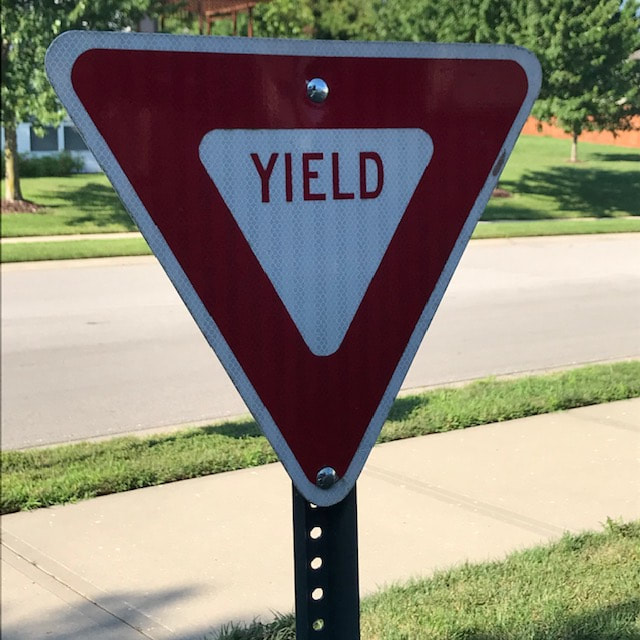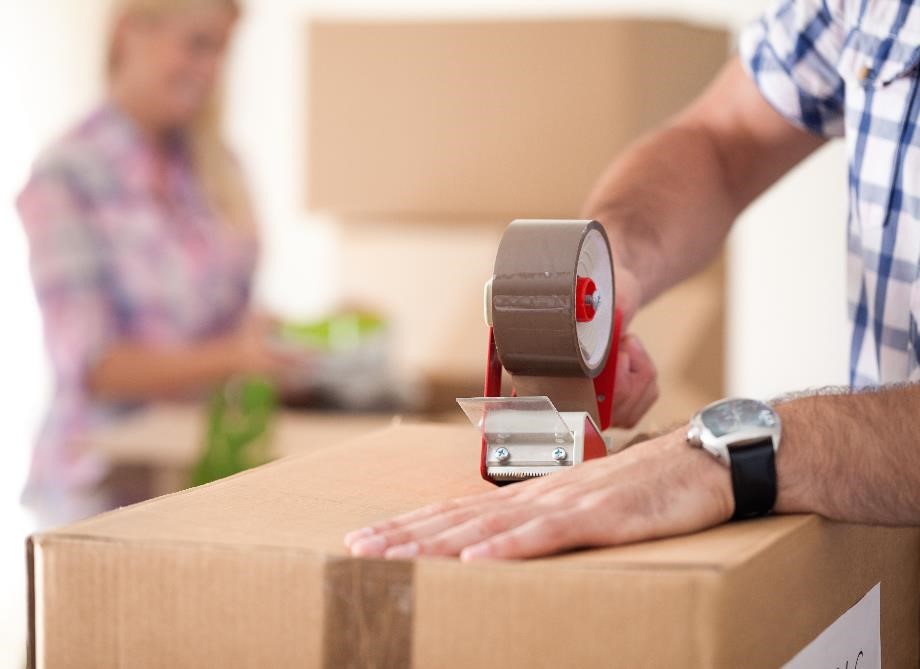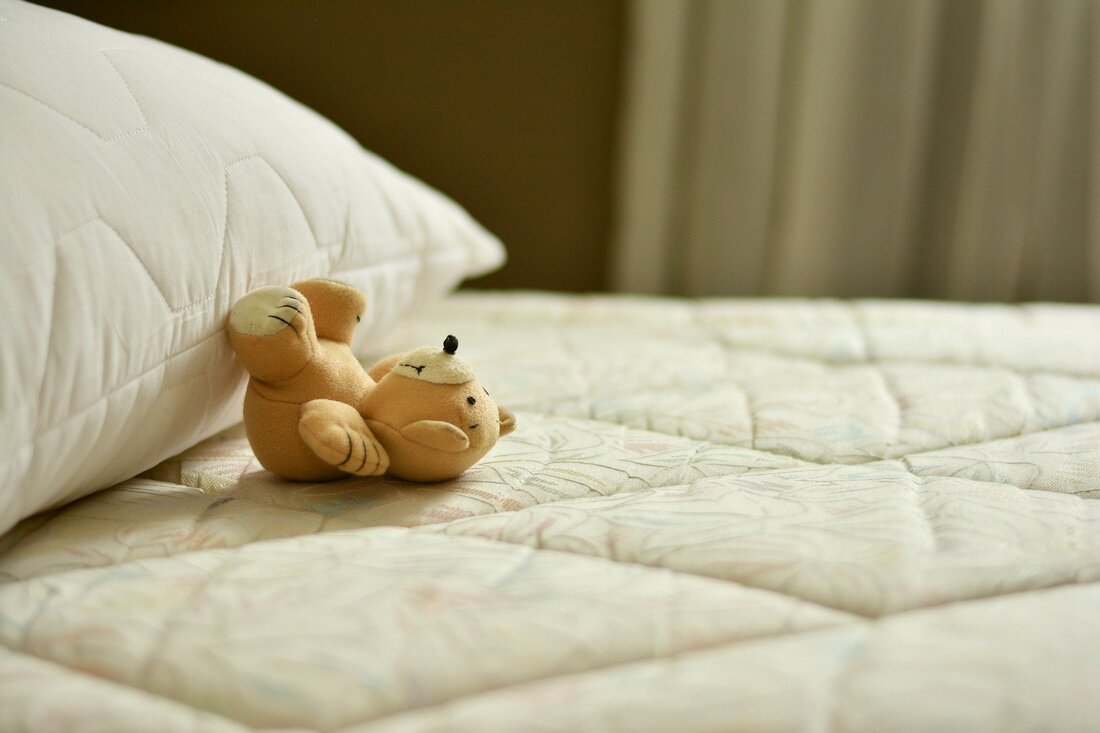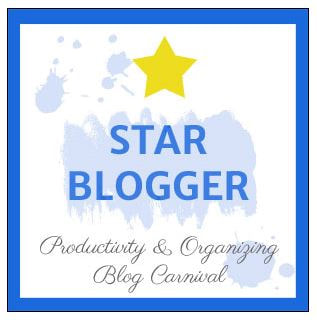|
|
|
I just returned from a walk in the brisk fall air. I love fall. It is by far my favorite time of the year. I spend much of the summer anxiously awaiting its arrival, and I mourn its passing as mild, sunny days give way to winter's chill. The reasons for my fondness of fall are many, but this morning as I observed random leaves floating to the ground, one in particular stood out in my mind: change. I like the change in the weather, the change in activities, the change in focus, and the changes in nature. All this got me thinking about the concept of change, especially when considered in conjunction with some other aspects of my walk which I will share in this post as well. We are currently undergoing a major life change. We are moving houses. I'm both excited and overwhelmed by the prospect. That is the thing with change; it can be both uncomfortable and exciting at the same time. For instance, there are many things about my current home that I love and will miss. That said, there are even more things about my new home that I am eager to enjoy. Instead of focusing on what I am giving up, I am trying to appreciate those things that I love about the old house and the enjoyment those things have brought to my life. I will look back on them with a nostalgic fondness and appreciation. I will not pine away for the loss of them. Instead, I will focus on the new experiences and opportunities that my new home affords. Change can take many forms, but certain types of change are commonly experienced. My walk brought to mind a number of metaphors for change which I would like to share. In recent months much of the world has experienced a narrowing of the path ahead. COVID-19 has restricted people's ability to work, socialize, and function freely. Many people have keenly felt the limitations imposed by these external constraints. Others have instituted their own personal constraints in an attempt to protect themselves and their loved ones. At the same time, many people have utilized this time of reduced external opportunities to reflect and build inwardly. There have been so many marvelous examples of people using this time of restriction to expand their lives in meaningful ways by focusing on family, rethinking priorities, tackling projects, and purging the unwanted from their lives. When the path before us narrows, we can choose to see it as a limitation or an opportunity. In reality, it is both, We can utilize the duality of the circumstance to look back with gratitude and insight regarding the distance we have traveled while simultaneously focusing our efforts moving forward. Sometimes, the road ahead gets steep. Troubles seem to come in bundles. Life gets a little (or a lot!) hard for awhile. At such times, we can find ourselves asking, "What next?!" as new problems present themselves. It can feel as though we are endlessly climbing. Just as climbing a steep hill in real life makes us physically stronger, climbing metaphorical hills can make us emotionally and intellectually stronger. The beautiful thing about hills is that they always end in an enhanced perspective. When we get to the top, we can see farther, understand our position better in relation to everything around us, and know better how to plot the course ahead. It can be tempting when trudging uphill to focus downward on the next step. While this method will keep us moving forward, it does little to make the journey more bearable. Instead, why not pause periodically to catch your breath and look back at the distance you've traveled? Doing so can instill feelings of gratitude, accomplishment, and hope. When you resume, try to look up and enjoy the ever-decreasing distance between yourself and the summit. Thinking in terms of time management, responsibilities, and other burdens, we sometimes need to lighten our load for the upward trek by laying aside, if only for a time, those things that are extraneous and superficial in order to focus on what matters most. What matters most at any given time will change with our circumstances and needs. Don't be afraid to tell others, "My path is steep right now. I need to lighten my load." Depending on who you tell, they may actively look for ways to help lessen your burden. They say that what goes up must come down. When we get to the top of life's metaphorical hills, we are typically faced with a steep decline. After the difficult upward trek, it can be tempting to let gravity and our renewed energy pull us downward at an ever-increasing pace. Better to walk carefully and intentionally, enjoying the newly gained perspective. Following a challenging time, give yourself grace and patience as you slowly add meaningful things back into your life. Resist the urge to invite too much into your life too soon, be it activities, commitments, or stuff. Occasionally, something really big comes along. It might be an illness or injury. It might be the loss of a job or a loved one. Whatever the case may be, such life changing events tend to demand an inordinate amount of our time, attention, and energy. They force us to yield to their demands and set other aspects of our lives on the top shelf to gather dust for a time. Such events or circumstances are largely unavoidable, and in many cases, unpredictable. Many of my clients are just emerging from (or still caught up in the midst) of a life-changing situation. Their routines have been derailed, and their personal surroundings have suffered as a result. With all their energy and effort focused on managing the 'big thing' in their life, things like order and organization have yielded. That's normal, but it doesn't have to be permanent. When circumstances force your to yield to their demands, know that yielding, by it's very nature, is temporary. Whatever the passing obstacle, it will pass, and it will once again be safe for you to continue on your way. Don't berate yourself for "letting things get out of hand". They are just things, and over time you can regain a comfortable level of control. While it would be nice to always be assured of a straight and shady path (like the one above), that isn't how life works. That's actually a good thing. An unbending path is a boring path void of opportunities to test ourselves and increase our strength. I purposefully saved this image for the end. This part of the path is located toward the end of my walk. As you can see the path ahead curves. The sign, in fact, indicates multiple curves ahead. There are curves ahead for all of us, and we often can't see what lies around the bend (as is the case here). That's why it's good, when we get the chance, to sit down on a comfortable bench and rest. While we're at it, we might also take a moment or two to toss out any "trash" that is burdening us before stepping back onto the path to see what's around the corner. Change is inevitable. Change is often difficult and almost always uncomfortable. Change is also necessary and beneficial. When viewed with the proper perspective, change can be an instrument for gratitude as we look back on past experiences and the ways in which they have shaped and blessed us. Change can also be a precursor and instigator of growth in our lives as we adapt to our shifting circumstances and improve ourselves in the process. It isn't only our circumstances that change. We change over time as well. Our interests, tastes, needs, wants, and preferences change. Often, instead of letting go of things that held meaning or interest to our former self, we cling to them. Our progress on the path ahead, be it hilly, curvy, or wrought with obstacles, will be easier if our burden is lighter. Letting go of the things that no longer represent who you are and what matters to you, leaves you free to welcome the changes ahead. How has change impacted you? What insights have you gained as you have overcome challenging times?
10 Comments
We're moving, or at least we think we are. We are certainly considering it seriously. At any rate, we're in a moving mindset. A couple of weeks ago, my husband said to me, "When we move, we're not taking that with us." It happened to be a piece of furniture, and I happened to agree whole-heartedly with him. In fact, my response was, "I was thinking the same thing." And I was. In fact, I have been thinking that about a lot of things, and this has got me pondering: If I wouldn't take it with me when I move, why am I holding onto it? Sometimes the answer to this question is a perfectly reasonable one. Perhaps the item is useful in the current location, but it won't be needed in the new one. Such would be the case if, for instance, you lived in an area where is snows regularly and you were moving to a southern state. You might opt not to bring the snow blower to your new location. Often, however, our reasons for holding onto things we wouldn't take with us if we were moving are not so easy to define and may require a little soul searching. I have decided to begin a pre-move purge. Even if we decide not to move, I know I will be glad that I embarked on this endeavor. No matter what one's current life circumstance, a little purging is always good for the soul, not to mention one's space. Below is my ever-growing list of items I will not be taking with me if and when I move. I've got specific examples, but I've decided to generalize in order to provide information that will be more widely applicable.
STUFF WE'VE OUTGROWN: Clothing is, of course, the first thing that comes to mind, but it is by no means the only category of items that fit this criteria. It is possible to outgrow items not only physically, but also intellectually, emotionally, or simply in terms of preference. As an example, a client of mine recently told me that the music in her CD collection "no longer falls on my ears like it used to." In other words, her tastes have changed. She has outgrown her old music. What have you outgrown? You don't have to wait for a move to get rid of things you no longer love. PILLOWS: The National Sleep Foundation recommends replacing pillows every one to two years. This is because pillows absorb dust, dead skin cells, body oils, and other icky stuff that attracts dust mites and other microorganisms. While it is possible to extend the life of some pillows by washing them every three to six months, they will not last indefinitely. The following are indications that your pillow needs replacing:
MATTRESSES: Like pillows, mattresses serve as collection sites for all sorts of yucky stuff. There are some things you can do to care for your mattress and extend it's life, but generally speaking mattresses should be replaced every eight to ten years. Moving is a great time to assess the condition of the mattresses in your home and leave behind those that have lived a full life. DAMAGED STUFF: I have a tendency to use things until they are unusable. My cell phone is a great example. My children regularly chide me about the fact that it is so outdated (I still have an iPhone 7 and my iPad is 8 years old). But it still works, albeit not as well as I would like. Another example is my blender. The lid to the pitcher does not seat properly unless you physically hold it down. It makes using the blender a bit frustrating. To replace the pitcher and lid costs almost as much as a new blender, so I am not taking the old one with me when I move. It isn't worth salvaging. Most of us have stuff that is broken, stained, frayed, threadbare, or otherwise damaged. We hold onto such things because we once loved them, and we would like for them to be whole again or because we do not want to spend the money to replace them. Whatever our reasoning, holding onto such items only adds clutter to our lives. OUTDATED ELECTRONICS: We have a bin in our attic full of old electrical chargers and cords. I cannot identify the purpose of 99% of these accessories. I strongly suspect that the vast majority of these cables and cords do not work with any device currently residing in my home. We've lived here for seven years and never needed them, so they will not be coming with us when we move. Do you have any outdated electronics in your home? My page Where to Donate or Recycle Electronics offers a variety of resources for disposing of electronics safely and responsibly. UNUSED APPLIANCES: I knew it was time to get rid of the quesadilla maker when I went to make quesadillas and intentionally opted to use another method for preparing them. The same was true for my fondue pot. Unused appliances take up a lot of space, so parting with them is a great way to clear the clutter from your kitchen. UNUSED SURPLUS: I'm a firm believer in being prepared and keeping things on hand that you use regularly. It's wonderful to be able to pull a staple item off the shelf when you run low rather than having to run to the store. That said, most of us hold onto an excess of things we don't use or only use periodically. In the case of food items, this can be doubly wasteful. The space needed to store the items is wasted, and often the items themselves go to waste because they expire and have to be discarded. I happen to have a weakness for school supplies. Despite the fact that I have resisted the urge to 'stock up' on such items during the late summer sales for the past two years since my youngest child graduated high school, I still have drawers and bins teaming with empty notebooks, unopened bags of pens, and other school essentials. It's time to make a realistic assessment of what we will actually use in a timely manner and edit my cache. DUPLICATES: We recently bought a brand new squeegee to push the rain off our deck. A few weeks later we discovered that we already owned a squeegee - the exact same squeegee, in fact. One of them is going to find a new home before we move. A couple of years ago, we received a waffle iron as a gift. We already had a waffle iron. Since getting the new one, I have not used the old one. I'm keeping the new one and bidding the old one farewell. As the wife of an army officer, I also have an impressive collection of serving trays which have seen a lot of use over the years. In addition to my own collection, I inherited several from my step mom. These days they don't get nearly as much use as they once did. Time to pare down the collection and pass some on to another user. Chances are you can think of similar examples among your possessions. If you have two, and one will do, I encourage you to choose your favorite and give the extra one away. STUFF THAT"S MOSTLY USED: The list of examples that fit into this category is potentially unending. I'll just give you a few to get your mind going: lipstick and other cosmetics, nail polish, partially burned candles, gift wrap scraps, craft supplies, medicines you no longer take, paint or glue that's drying up, lotions and other toiletries you tried but didn't love. You get the idea. Look for stuff that's been opened and partially used that's been sitting around for some time. Ask yourself if you're ever going to use it and get rid of it if the answer is no. STUFF I"VE BEEN KEEPING FOR THE WRONG REASON: As an organizer I am not completely immune to the subtle, yet alluring, array of excuses that cause us to keep things we don't want or need. My moving game plan is thus: make an honest assessment as to why I am keeping things and part with those things that have been burdening me in one way or another. Examples include things I've kept out of guilt, things I've kept out of laziness, things I've kept out of a sense of sentimentality, and things I've kept just in case. Whether you are moving or not, it is always freeing to let go of things that have been burdening you, so I'm looking forward to this part of the purging process in particular. Be Motivated By Moving |
Archives
November 2022
Categories
All
|
Proudly powered by Weebly











 RSS Feed
RSS Feed